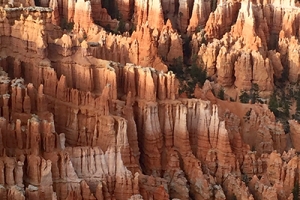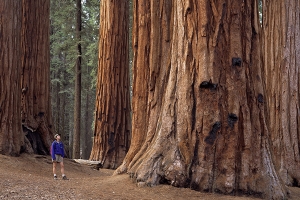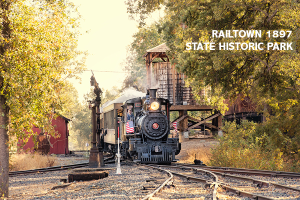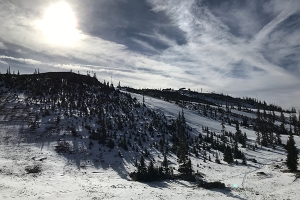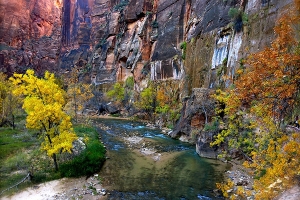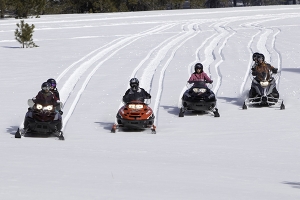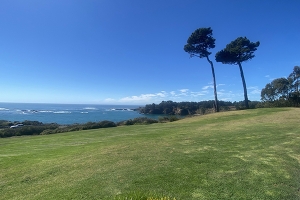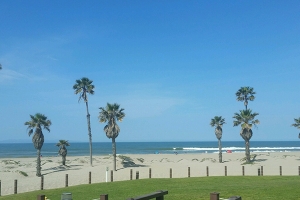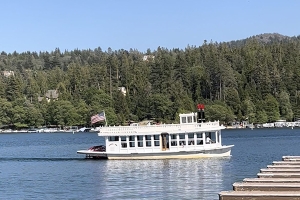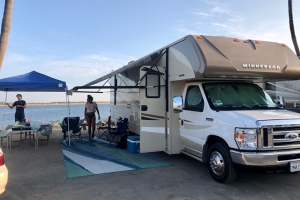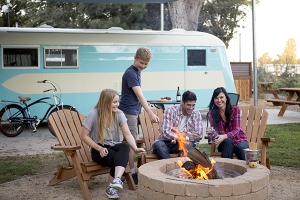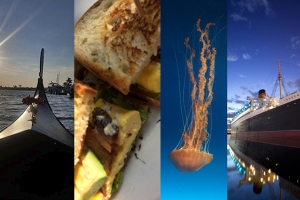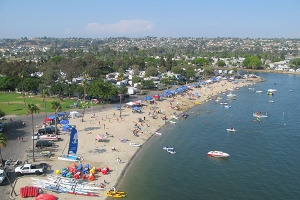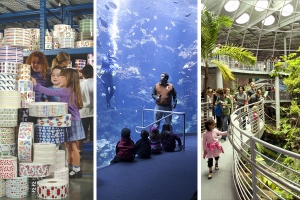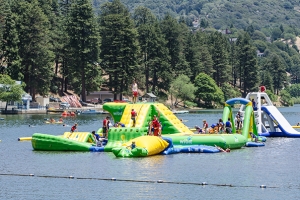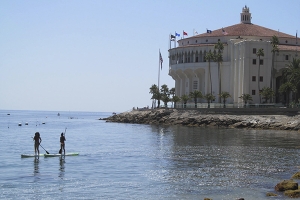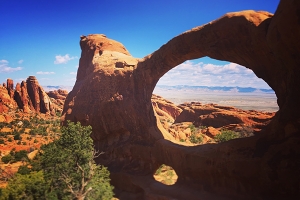FINDING TREASURE IN SAN DIEGO
Hidden and Lost Treasure Await
Thanks to the success of movies such as “National Treasure” and “Book of Secrets,” as well as the popularity of the Travel Channel’s series “Cash and Treasures,” people have become aware of the lost treasures hidden around us.
When I was a young girl growing up in San Diego, my father used to take me gold panning at the Yuba River, garnet hunting in Nevada, and regaled me with tales of The Lost Dutchman’s Mine in the Superstition Mountains, but I had no idea about the supposed riches located within San Diego County. From sunken Spanish galleons filled with Aztec gold to gold coins stolen from stagecoaches to vast amounts of pink tourmaline, San Diego apparently hosts a trove of hidden treasures that, with a little research and a lot of luck, are yours for the finding.
Gold in Them Thar Hills
In the winter of 1869-70 when former slave Fred Coleman discovered gold in a small creek just outside of Julian, it set off a frenzy that became San Diego’s Gold Rush. Within a few weeks, there were more than 800 prospectors combing the hills in search of gold with more than 40 claims registered. In just two months, what was originally called “Emily’s City” and consisted of tents, became the new town of Julian City. Wells Fargo set up a station to transport the gold to San Diego.
The mines would flourish over the next seven years, producing nearly 5 million dollars in gold (this is at the rate of 20 dollars per ounce at the turn of the century, not the 1000 dollars an ounce it is today). Just eight mines produced more than 90 percent of all the wealth in the northern Cuyamacas: the Owens, Helvetia, Golden Chariot, Ready Relief, Blue Hill, North Hubbard, Stonewall and Ranchita. The issue of who owned the land being mined became a heated issue for more than a year and was finally settled in favor of the miners.
The most successful was the Stonewall mine, located just before Lake Cuyamaca, off Hwy 79. It was mined off and on for many years, producing more than 2 million dollars in gold, and a small city even sprung up around it called Cuyamaca City. There were bunkhouses and a hotel, saloon and post office for its nearly 500 residents. Gold levels soon dropped off, and when it was sold to Ralph Dyar in 1923, he decided to raze the derelict buildings and remnants of the abandoned town in order to avoid property taxes. Very little of the historic mine remains to be seen today, but there is a small museum, some foundations and equipment.
In Julian, the Eagle mine overlooked the small town and is open for tours. It was worked in 1870 and sporadically from the 1880s until 1939, with the total value of the gold extracted between 25,000-50,000 dollars. It joined with the High Peak mine. Visitors can explore 1000 square feet of underground hard rock tunnel, view authentic tools and machinery, learn about the gold extraction process and even pan for gold. The mine is open for tours daily.
The discovery of gold was an exciting chapter in San Diego’s history, but the frenzied gold rush only lasted seven years. No one disputes that there is still a fabulous wealth of gold in the area—but the extraction has proven too costly and it remains locked in the rock vaults of the Cuyamacas.
Sunken Treasure
In January 1952, Oceanside ophthalmologist Joseph Markey made a speech before the San Diego Historical Society proclaiming to have solved an old mystery involving the Spanish galleon “Trinidad” that supposedly wrecked off the coast of Oceanside in 1540 with millions in Aztec gold. He discovered a cave near the outskirts of Camp Pendleton with the skeletal remains of 22 Europeans, along with weapons and gold coins.
Markey presented a detailed account of the last days of Francisco de Ulloa and his men with the support of archaeological evidence and Spanish documents. Markey described how Ulloa and his crewmen, ill with scurvy, had anchored the galleon in the mouth of the San Luis Rey River, and headed inland only to succumb to dysentery. The abandoned galleon sank somewhere near Oceanside.
Although the public and media greeted the story with great enthusiasm, challenges to Markey’s theories began to trickle in. Some doubted the validity of the documents presented by Markey, including a mysterious diary written by a “Trinidad”survivor, amid other historic evidence that Ulloa was alive and testifying in Spanish courts in 1542.
But suspicions of Markey’s theory have failed to discourage treasure seekers from locating the “Trinidad.” Expeditions to locate the wreck have been launched over the past years. Several cannons were found only a few hundred yards offshore in 1976, but bad weather and lack of funding seem to have curtailed search efforts. Dr. Markey, who promised a book documenting the famous Hernandez diary and maps, died in 1985. The book never appeared and the fate of “Trinidad”remains a mystery.
Vallecito Station
A haunted stage station is also at the center of several lost treasures. Vallecito, which means “little valley” with its natural spring and grasslands, was a welcome oasis to travelers after crossing the desert, which was referred to as “The Journey of Death.” The road through the valley was the only wagon road into Southern California and, in 1858, Vallecito became a stop on the famous Butterfield Overland Stage Route that traveled between Missouri and San Francisco.
Located near Anza-Borrego Desert State Park, the station was witness to murder, robberies and other human miseries. Four men on horseback robbed a stage traveling to Vallecito Station of 65 thousand dollars just before Carrizo Wash. Two of the bandits were killed in the gunfight. The other robbers continued on to the station, stopping somewhere in between to bury their loot. But at the station, the two bandits began to argue. The bandit leader left the building and rode through the doorway mounted on his big white stallion to shoot the other bandit. The wounded man returned fire and the leader fell dead from his horse. Spooked, the white horse ran through the door and out into the nearby hills. The money was never found, and legend says that the ghost of the white horse roams the hills.
Another stage was traveling from El Paso, Texas to San Diego with a box of gold coins in the 1860s. When the stage reached Yuma, Arizona, the guard fell ill and the driver continued on alone. Somewhere in the area of Carrizo Wash, between the Fish and Coyote Mountains, the stage was robbed and the box of gold disappeared. The bandit was later killed in a hold-up and his widow spent years searching for the treasure to no avail.
There is a site known as Treasure Canyon, which is part of the larger Potrero Canyon, located just to the west of the Vallecito station and northeast of Descanso, where two kettles of gold coins were supposedly buried. Numerous lost gold mines have also been reported in the vicinity of the Vallecito Station, including the Lost Bell Mine, the Lost Bill Williams Mine, and the Lost Squaw Mine.
Rock Hounds
The largest natural pink tourmaline ever discovered is exhibited today at the Smithsonian in Washington, D.C., but few know that it came from the Stewart Mine in Pala, California, which is know for the finest pink tourmaline in the world.
Few precious and desirable things can ever exceed the pink tourmaline of Pala. Gem-quality natural pink tourmaline is five times more rare than diamonds and more than 10 times as valuable in its pure form. It’s harder than quartz, is highly reflective and comes in a variety of colors with pink, blue and green among the most prized and valuable.
During the 1860s, the first expeditions into Riverside and San Diego Counties to explore for gem and mineral resources were undertaken by miners who had left the gold rush farther north. Pala was practically uninhabited in the late 1800s, and though erosion had laid open large pockets of gem tourmaline, the first individuals who gathered the gems did so without knowing the conventions of laws or mine claims. It wasn’t until 1888 that the mine was officially claimed and named for one of the original partners. The Stewart Mine began to go into serious production, making news around the world by 1890.
Most of the pink tourmaline mined at the Stewart Mine went to the empress of the Ch’ing Dynasty Imperial Court in China. In 1903, when most farmers sold their land to the government and a reservation was established, the Stewart Mine remained private property. The mine is a labyrinth of several miles of underground tunnels. It has been worked for well over a century, but more than 80 percent of it has yet to be mined.
Federal regulations and insurance requirements prohibit public access to the mine. However, at Gems of Pala, visitors can purchase buckets of underground mine gravels from three different locations within the two and a half mile maze of tunnels. The locations determine the prices, ranging from 10 to 50 dollars. The mine provides screens, tables, and an instructional five-minute video to allow visitors to mine and discover their own gems and minerals from the buckets of fresh underground materials.
There is no “X” to mark the spot. If these treasures were easy to find, they would have already been found long ago. It takes patience, digging (both literally and figuratively through research) and lots of luck. So study newspaper clippings, mark out a map, grab a metal detector and happy hunting!
Gina Petrone lives in Julian, is the mother of two young boys and can’t wait until they’re older to take them to look for the Lost Dutchman’s Mine.

